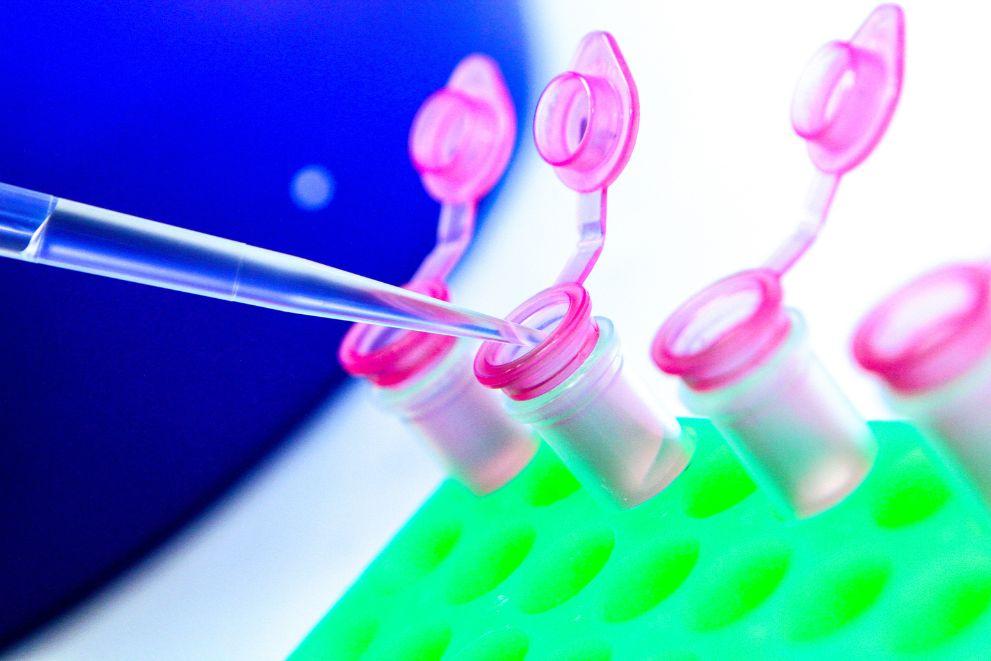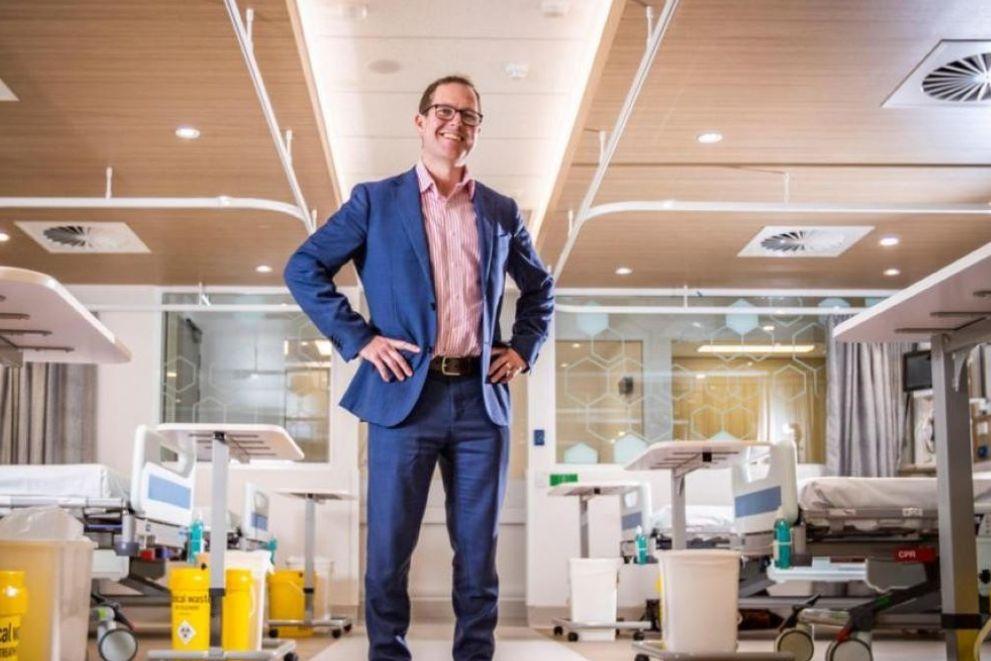Australia’s fast-growing life sciences sector is one of the largest in the southern hemisphere. It’s worth more than $250 billion and home to more than 2,600 organisations.
Our high-quality and innovative healthcare system is envied around the world. It’s underpinned by a world-class medical research sector, nurtured in our universities and hospitals, medical research institutes and life science companies.
Thinking about entering the Australian market?
- Investors typically establish a new company, register as a foreign company or acquire an existing company. Assess your options with our Investor Guide.
- Austrade is Australia’s national investment promotion agency. We attract and facilitate game-changing foreign direct investment into Australia. Our team of business and investment specialists can connect investors to early-stage opportunities in Australia and provide direct and tailored professional assistance. Find out how we can help.
Australia’s progressive environment fosters research translation, manufacturing and clinical adoption with ease. Businesses considering expanding to Australia will find:
- An established and early-adopting healthcare system
- A vibrant innovation ecosystem with world-class medical research expertise and infrastructure.
- Outstanding clinical trial capabilities, with streamlined and globally-recognised regulatory pathways to expedite studies.
- Significant government support, including an R&D tax offset of up to 43.5% and more than A$21.5 billion in support funds for life sciences.
- An export-driven economy with 18 free trade agreements
- Strong intellectual property protections
Advanced Therapeutics in Australia 2023
Australia has full bench to bedside capabilities. Find out why Australia is an outstanding location to research, develop and scale your life sciences innovations.
Source: AusBiotech Snapshot 2022
A culture of innovation
Australia has a strong culture of innovation and investment in medical research. It makes us a key development hub for cutting-edge medical procedures and life-saving medicines.
We consistently rank among Nature Index’s top 10 contributors to life sciences research globally – including ninth in 2022.
World-leading medical research institutes are found across the country, including the Walter and Eliza Hall Institute in Melbourne, Queensland’s Translational Research Institute, the South Australia Health and Medical Research Institute, the Harry Perkins Institute of Medical Research in Perth and the Garvan Institute of Medical Research in Sydney.
Our world-class universities top the leaderboards in multiple health and medical research fields, such as oncology, neurology, regenerative medicine, medical devices, tropical diseases, diabetes, cardiovascular disease and diagnostics.
Collaborating with an Australian university provides access to some of the world's best minds. The Australian government is investing in university-industry partnerships through the A$2.2 billion University Research Commercialisation Package.
Top Australian innovations
With a history of Nobel Prize-winning research, Australia has made significant contributions to global medical science:
- GARDASIL® – the HPV vaccine that is significantly lowering the risk of HPV-related cancers for women and men around the world
- Electronic pacemaker
- Ultrasound for pregnancy
- Bionic ear – the cochlear implant is one of the earliest examples of improving wellbeing through digital technology
- Spray-on skin
- Prevention of spina bifida with folate
- Penthrox® inhaler (green whistle) – a pain relief inhaler used in trauma and emergency settings
- CPAP – a successful, non-invasive breathing support device – invented in 1981 and used by patients during the COVID-19 pandemic
- EVestG – a diagnostic tool that detects mental and neurological illnesses.
Fast facts
- Australia ranks 3rd among high-income countries for healthcare choice and fifth for quality (Source: 2022 FREOPP World Index of Healthcare Innovation)
- We’re 2nd among OECD countries for health (Source: OECD Better Life Index)
- Australia spends US$176 billion on health - the 6th highest health expenditure in the world. (Source: Fitch Solutions Group, Worldwide medical devices market factbook 2022)
- Australia is a “go-to” clinical trial destination, with the world’s 3rd highest rate of industry-initiated early phase clinical trials (Source: ABPI 2022)
- 11% of global cell and gene therapies clinical trials were conducted in Australia (Source: AusBiotech 2021)
- More than four in five Australians support patients’ medical records being used for research (Research Australia 2020). More than nine in ten would share their de-identified personal health information to advance medical research, support patient care, develop new diagnostics or treatments or track diseases (Research Australia 2021)
- Australia ranks 3rd for intellectual property rights on the International Property Rights Index 2022
Our vibrant industries
Aged care
Aged care is a growing industry in Australia. The Australian population is ageing rapidly: by 2066, it’s estimated that 22% of the Australian population will be aged 65 years or over (Australian Bureau of Statistics, 2018). The Australian Government is forecast to spend A$36 billion nationwide in 2023-24.
Biotech
The Australian biotech sector has grown by 40% in the last two years. It’s valued at almost A$250 billion market capitalisation (Source: Stockhead 2022). With the establishment of a new Moderna mRNA vaccine manufacturing facility in Victoria further expanding Australia's vaccine manufacturing capability, the sector is expected to generate over A$8 billion in gross value added and $12 billion in manufacturing exports. With a vibrant research ecosystem and established clinical trials sector, there is significant demand that are creating opportunities for new investment into Australia.
Clinical Trials
Australia’s clinical trial capabilities, skilled workforce and specialised infrastructure are second to none. Our globally recognised regulator, the Therapeutic Goods Administration (TGA), provides fast-track regulatory pathways. Quality data from Australian studies can be used to support international submissions, including to the US Food and Drug Administration (FDA) and European Medicines Agency (EMA).
Digital Health
Australia is at the forefront of adopting innovative digital health technologies such as telehealth, electronic patient records and wearable devices. This is partly due to the development of connected national health infrastructure. It’s supported by multi-billion-dollar government investments and initiatives to establish data standards and drive interoperability.
Our health consumer ecosystems, market dynamics and regulatory frameworks are similar to the US and EU. It makes us an ideal location to pilot new digital health solutions before scaling to global markets.
Medtech
The total market for medical devices in Australia is valued over US$4.9 billion (Source: Medical Technology Association of Australia 2021/22). Australia’s strengths include bionic devices; implantables; nanotechnology; wearable devices; digital smart devices; digital therapeutics and 3D-printed body parts. Australia provides a low-risk testbed to develop and test medtech products, with quality clinical trials data accepted in other major markets.
Grants, incentives and support
- Australia's A$20 billion Medical Research Future Fund (MRFF) aims to transform health and medical research and innovation. It includes:
- the A$450 million , which supports innovative early-stage health and medical research in Australia.
- the A$47 million MRFF Targeted Translation Research Accelerator, which is improving the prevention and treatment of diabetes and cardiovascular disease.
- The Clinical Trials Activity initiative. This will provide $750 million over 10 years from 2022–23 to help Australian researchers and patients test new treatments through national and international clinical trials.
- A new A$50 million Australian Government-funded incubator program is due to launch in 2023, providing grants of up to $5 million for emerging biomedical and digital health companies. The new BioMedTech Incubator (BMTI) program will be jointly delivered by venture firm Brandon Capital’s BioCatalyst program and digital health accelerator ANDHealth.
- The National Reconstruction Fund (NRF) has A$1.5 billion earmarked for medical manufacturing through co-investment by the Australian Government via debt or equity support or guarantees.
- The Biomedical Translation Fund is A$501 million co-investment program helping translate biomedical discoveries into products and services.
- The Research and Development Tax Incentive makes Australia globally competitive for companies looking to innovate. Companies can access an R&D tax offset of up to 43.5% for eligible R&D expenditure greater than A$20,000.
- MTPConnect is an independent Australia Government-supported industry growth centre that for the medtech, biotech and pharmaceutical sectors.
- The National Health and Medical Research Council supports investigator-led research activities across all areas of health and medicine, providing grants in excess of A$850 million a year.
- The Australian Research Council funds fundamental and applied research across a broad range of health and medical science fields.
- AusBiotech has launched a directory of accelerators and incubators relevant to Australian life sciences companies in the early stages of their development. The majority of programmes listed provide funding.
- Australia boasts a number of health precincts that connect hospitals, universities, research institutes and industry partners support collaboration and knowledge transfer such as the QEII Medical Centre and Adelaide BioMed City.
Life science capability map
Explore Australia’s capabilities and innovation in the life sciences sector.
Australia’s national science agency, CSIRO, is one of the world's largest mission-driven multidisciplinary science and research organisations.
CSIRO consistently ranks in the top 1% of the world’s scientific institutions in 15 of 22 research fields (CSIRO Annual Report 2021-22).
Its expertise includes molecular diagnostic solutions and precision health and medicine research. Facilities include:




